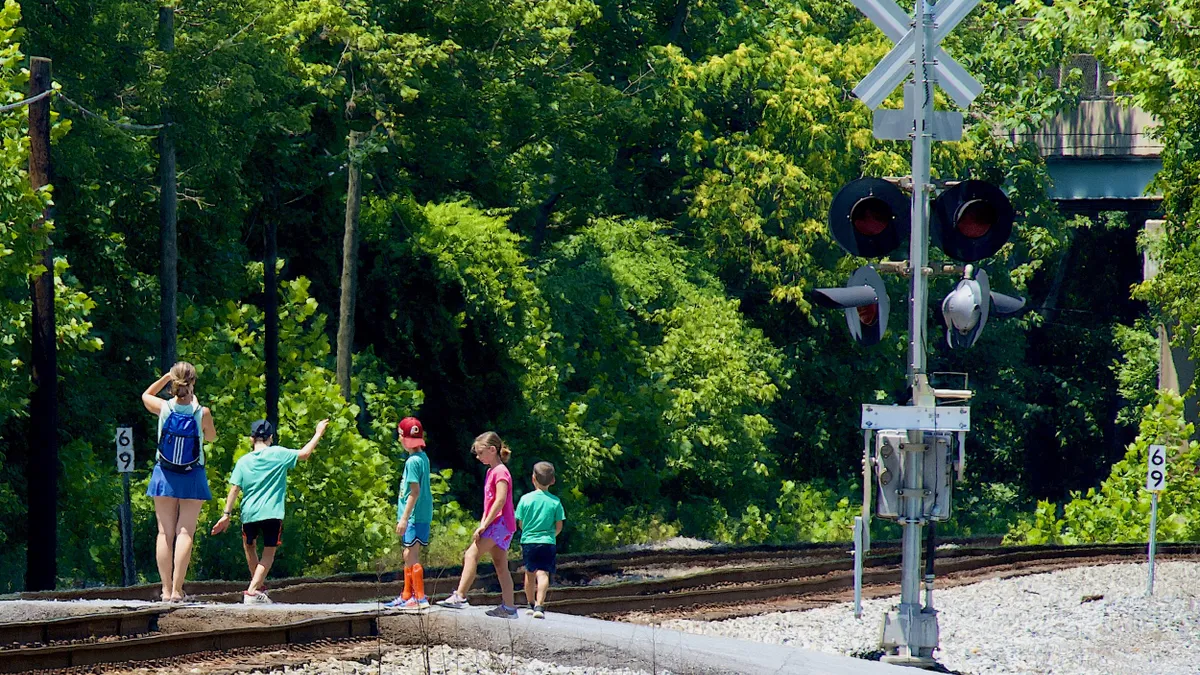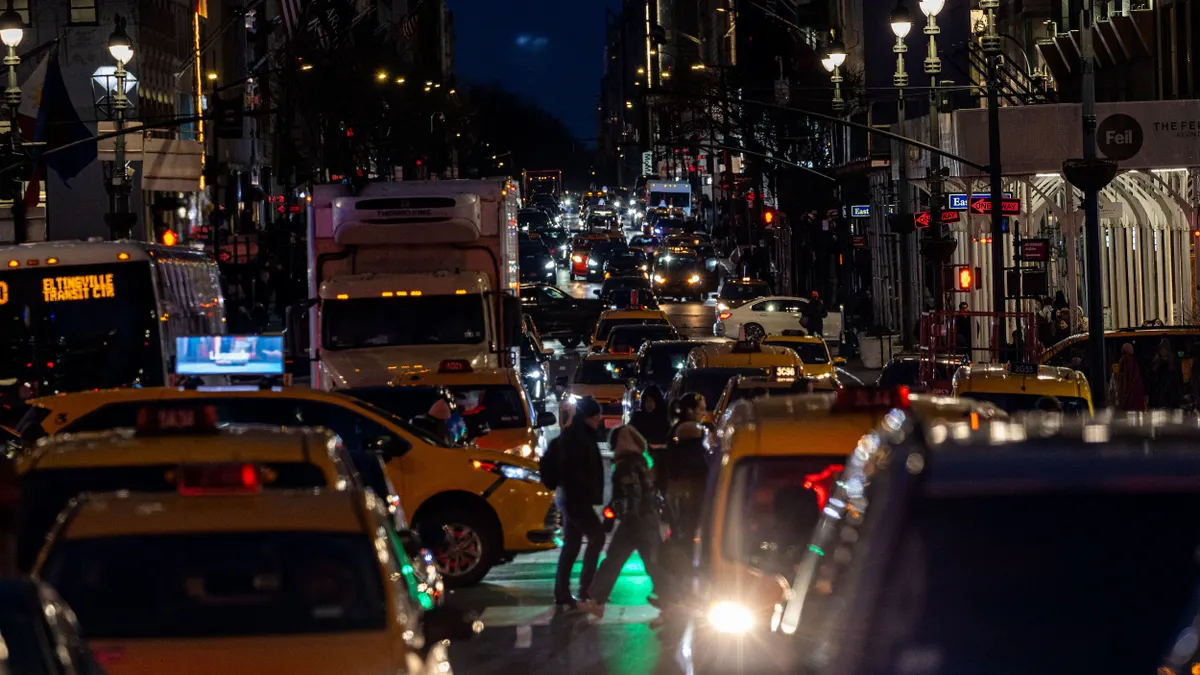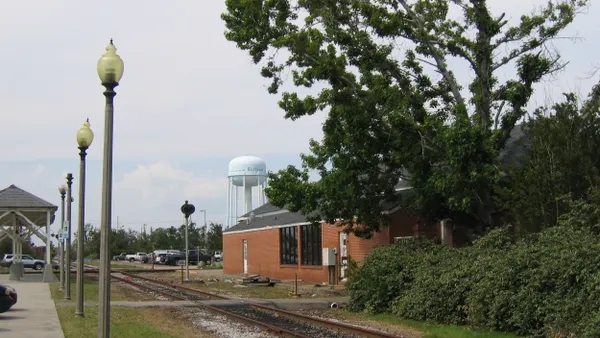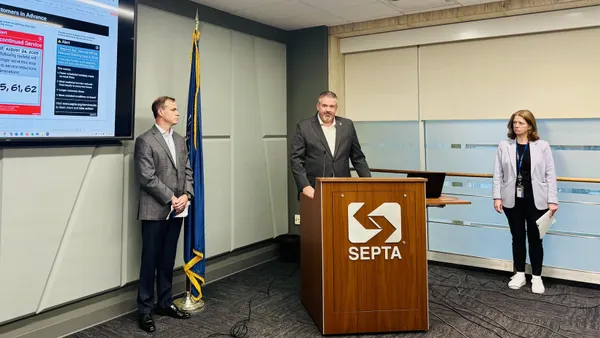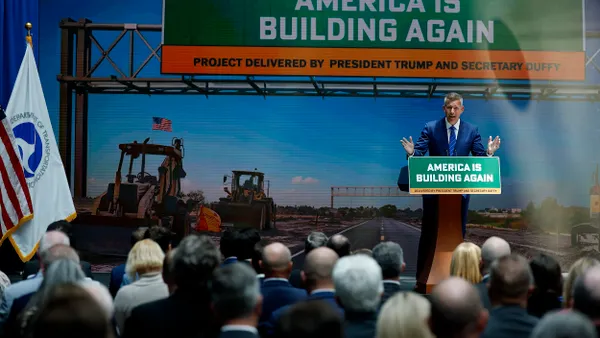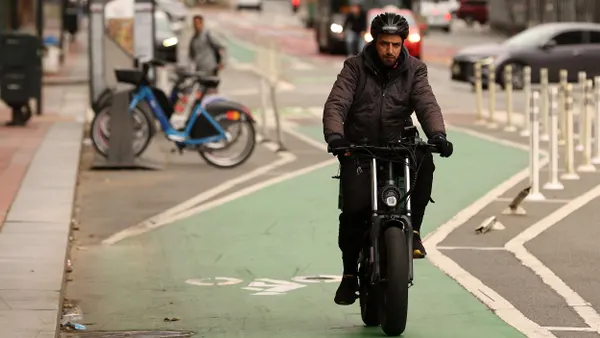Dive Brief:
- With increasing numbers of pedestrian deaths and injuries at railroad grade crossings, the Government Accountability Office issued a report this month on how states can use federal funding to reduce such accidents and how the Federal Highway Administration can better help state officials.
- In 2023, 89 pedestrians were killed at public railroad-highway grade crossings, according to the GAO report, an increase of 31% over 2014. Pedestrian fatalities accounted for 41% of grade crossing deaths in 2023.
- While state officials treat pedestrian accidents at public crossings and those where pedestrians were trespassing on the railroad right-of-way separately, FHWA guidance excludes trespassing incidents, according to the GAO report.
Dive Insight:
A train strikes a person or vehicle an average of every three hours in the U.S., according to Operation Lifesaver, a nonprofit focused on rail safety education. Railroads operate 140,000 route miles of track in the U.S., which include some 130,000 public crossings. Across a subset of states from 2019 to 2023, the number of crashes at such crossings declined 72% following completion of grade crossing projects, according to the GAO.
The 2021 Infrastructure Investment and Jobs Act, also known as the bipartisan infrastructure law, provided at least $245 million over five years for the Railway-Highway Crossings Program, administered by the FHWA. The IIJA also increased the federal share of eligible project costs from 90% to 100%, upped the maximum incentive payment that a state may pay a local government to close grade crossings from $7,500 to $100,000 and expressly said that projects to reduce fatalities and injuries of pedestrian trespassers at grade crossings are eligible for funding.
However, the GAO found that FHWA's technical assistance does not describe or provide examples of the types of pedestrian projects related to trespassing that may be eligible for funding, which may differ from improvements at public crossings. “Officials from one of the states suggested that a typical pedestrian project would include installing gates and lights for protection, whereas pedestrian projects related to trespassing could include barriers like installing plants or fencing to an area people are using as a shortcut that bypass safer routes,” the GAO report states.
The GAO interviewed officials and stakeholders from six states: Alabama, Delaware, Florida, Indiana, Texas and Washington, finding different approaches to reducing rail crossing collisions. Alabama and Florida officials told the GAO that ongoing education campaigns targeting adults and school-aged children proved successful in promoting safer behavior near rail crossings. In Indiana, the state Department of Transportation collaborated with local law enforcement agencies to increase patrols at high-risk crossings, issuing fines to drivers and pedestrians who disregarded safety measures.
The GAO recommended that the FHWA review and update the technical assistance it provides grant recipients to include information about pedestrian projects related to trespassing, which “would better position states to address rising pedestrian fatalities at grade crossings.” The Department of Transportation concurred with GAO’s recommendation.



